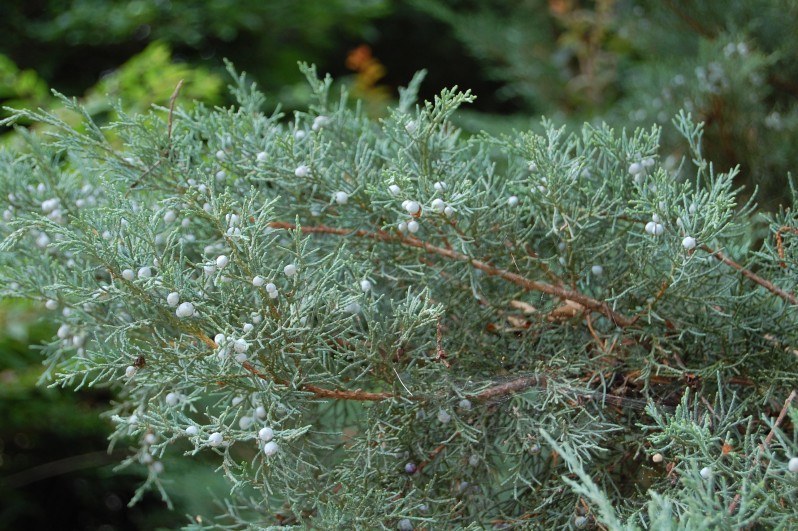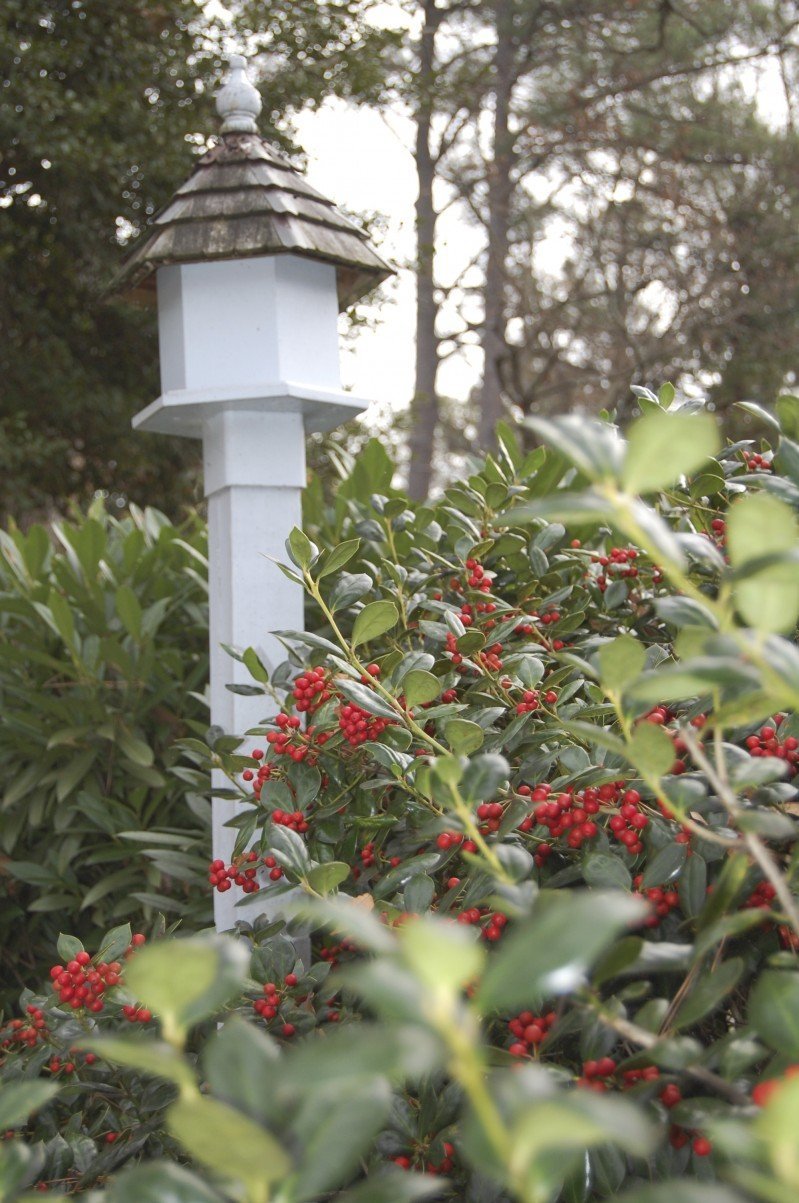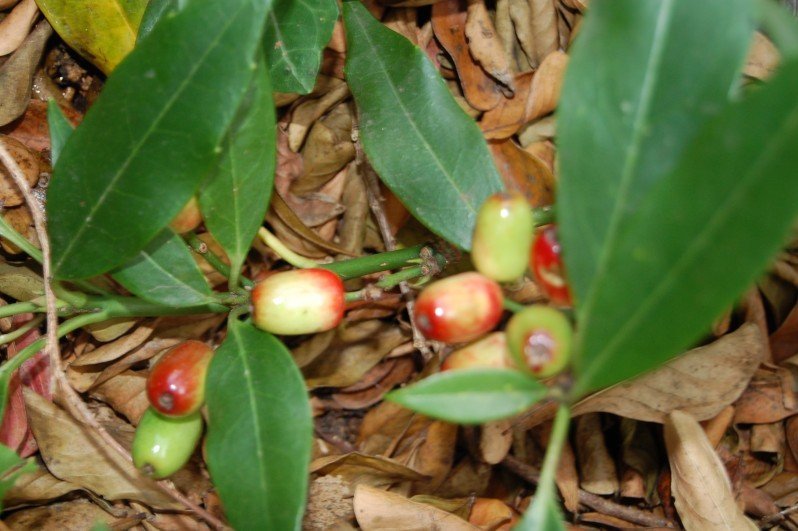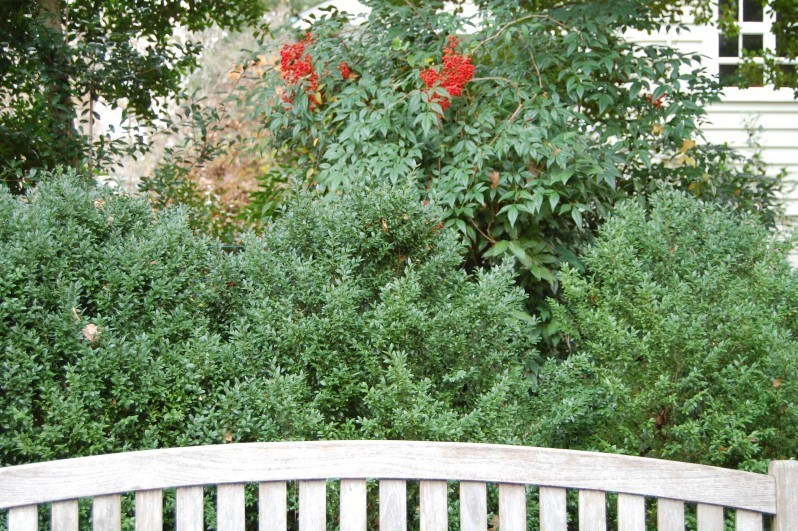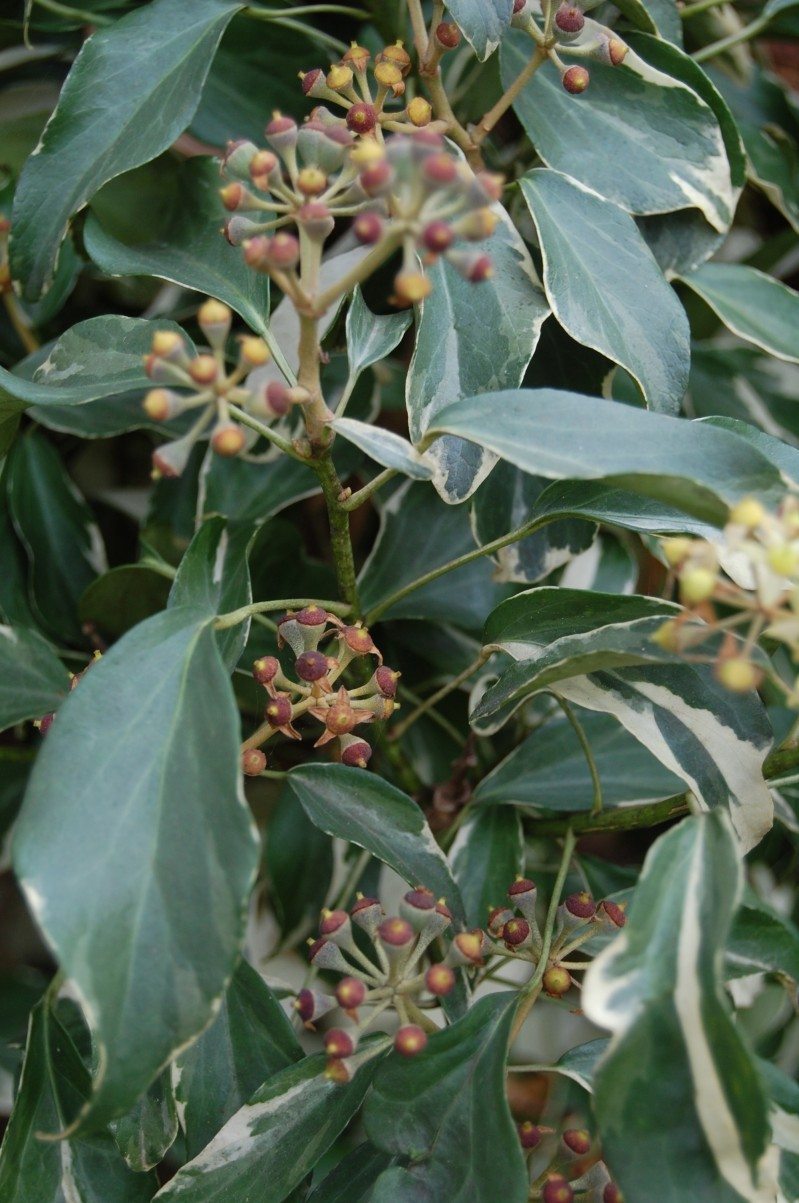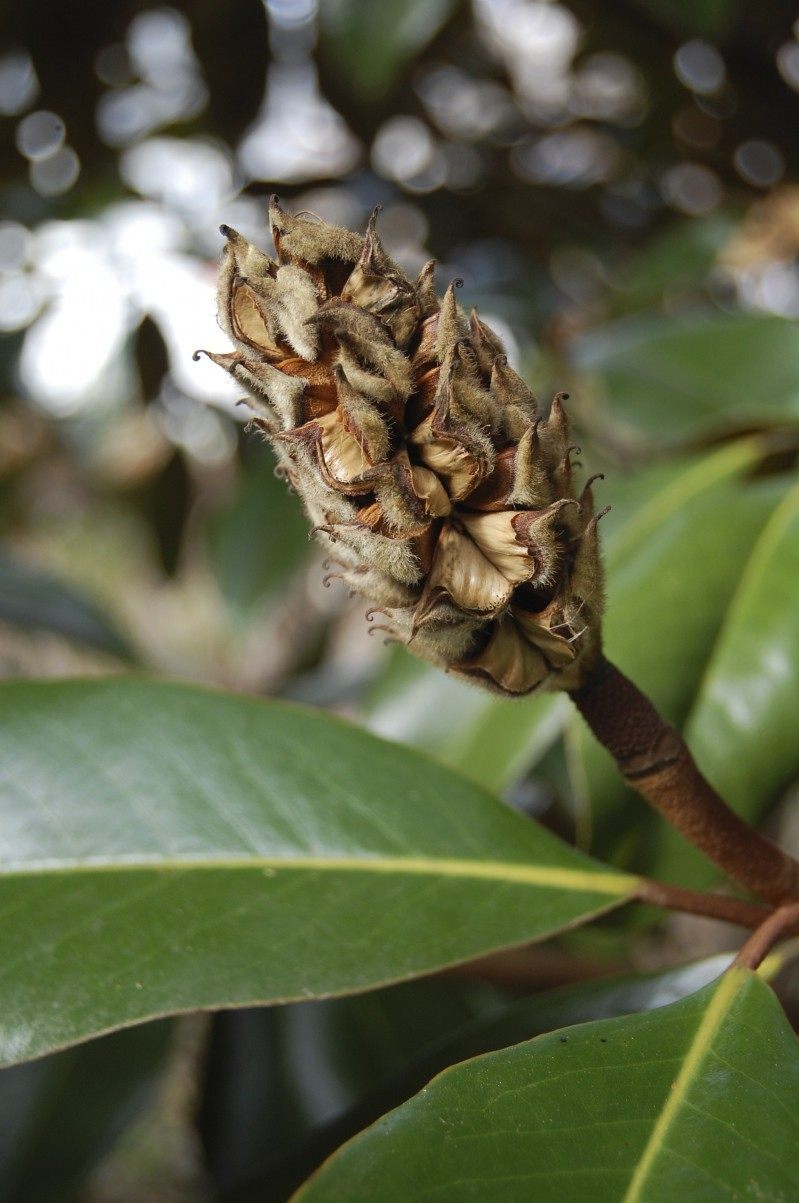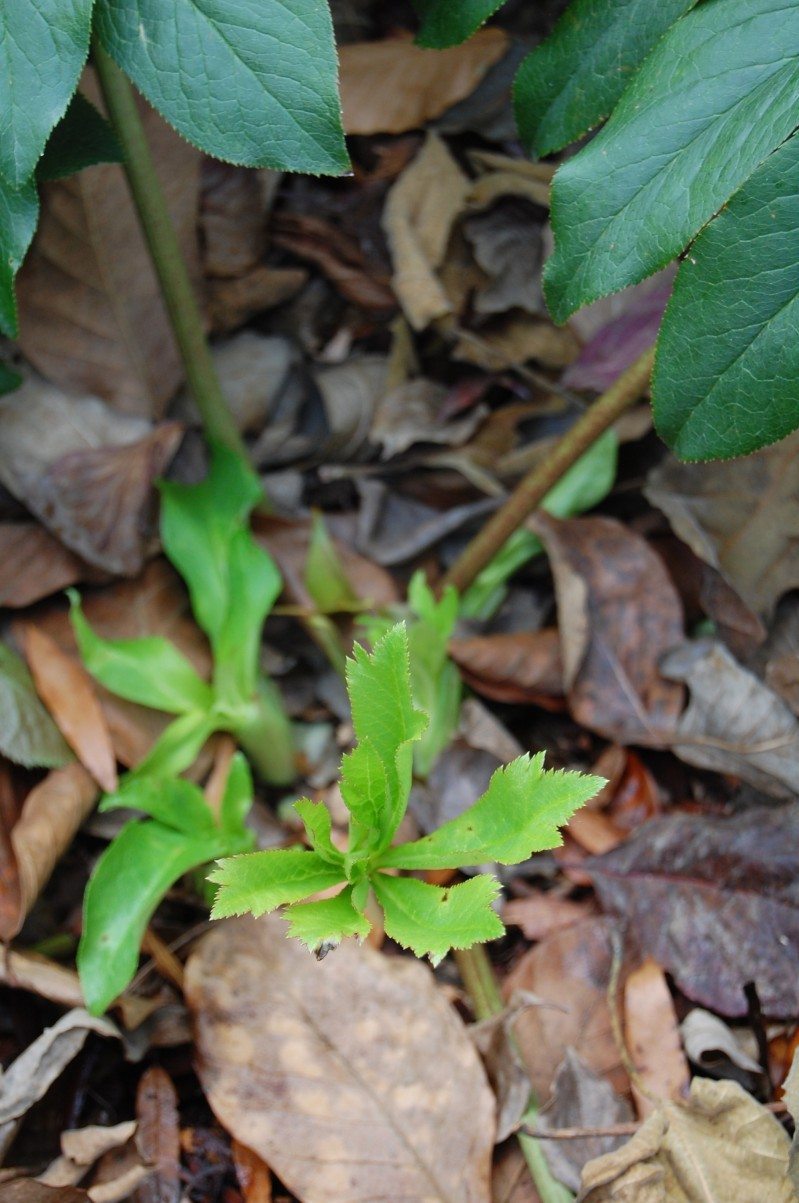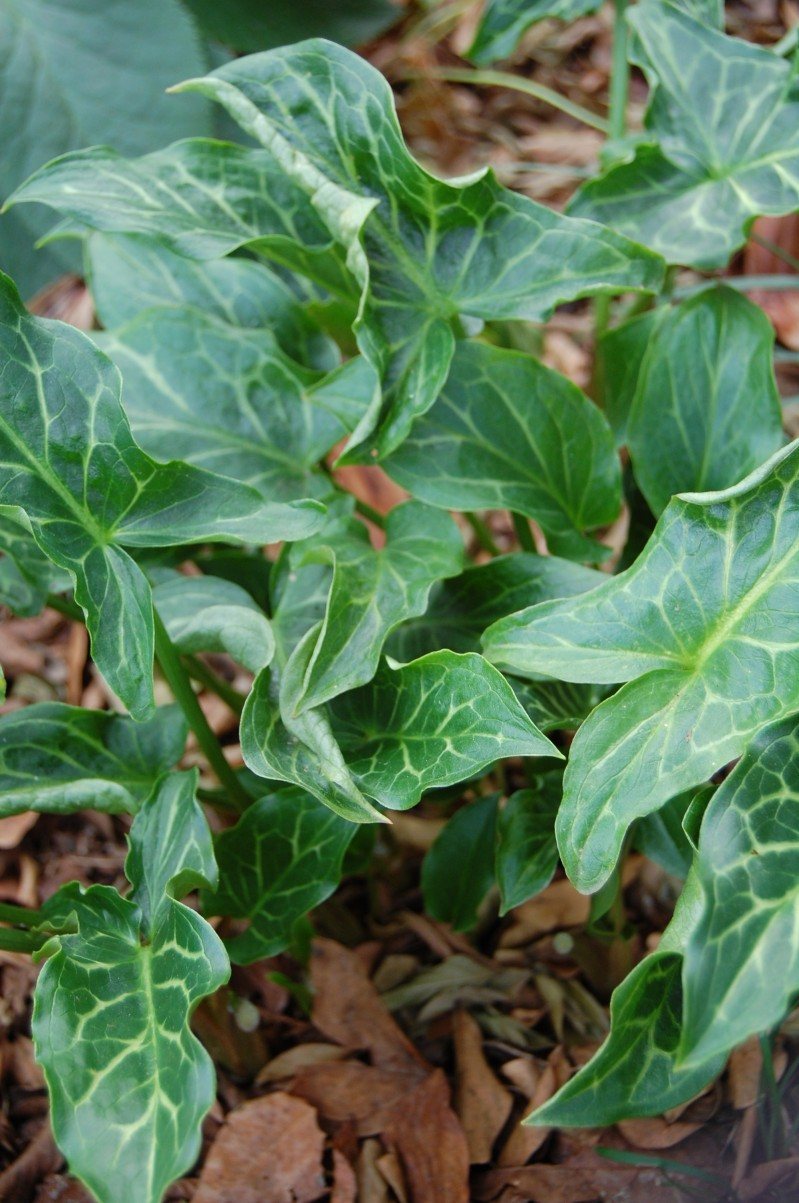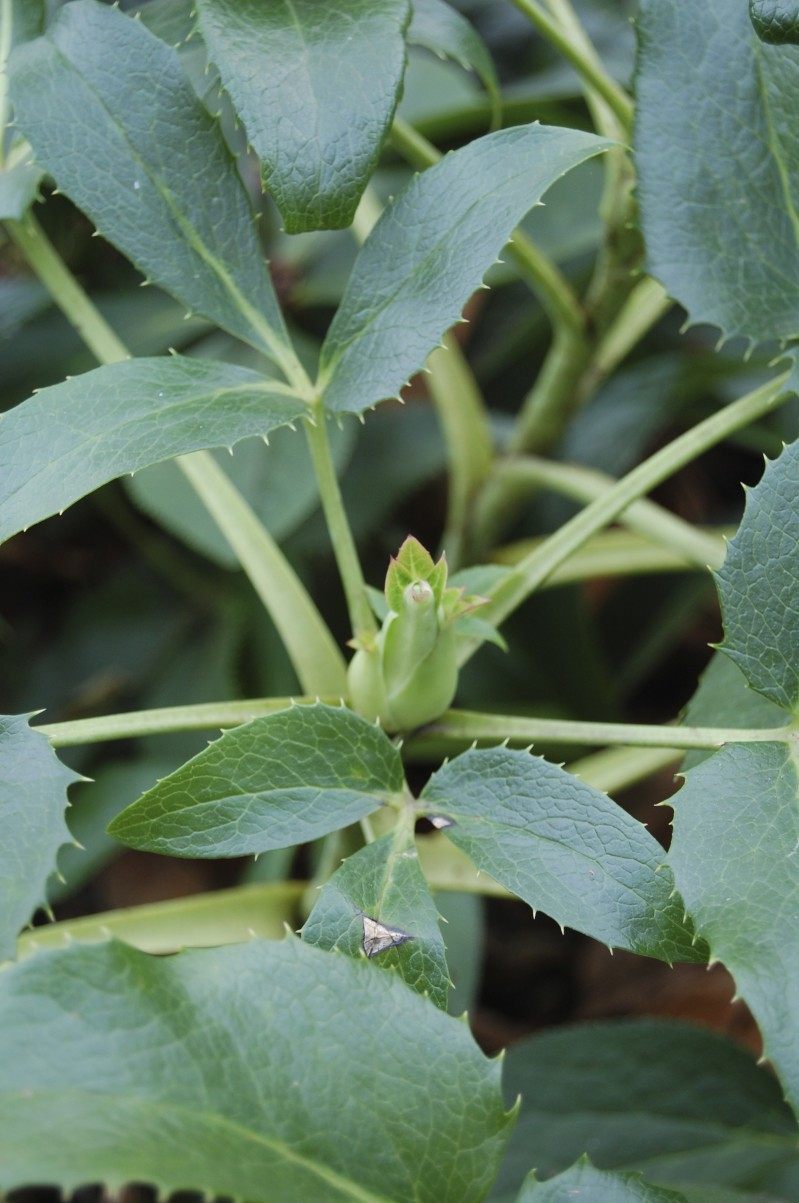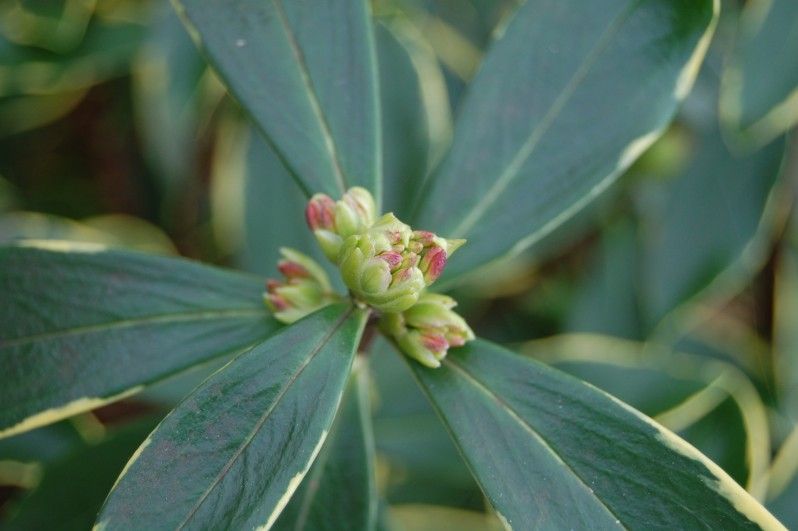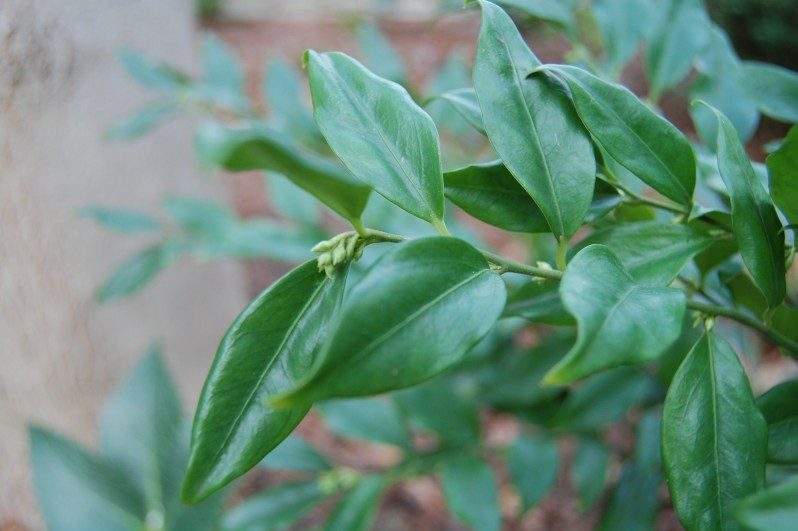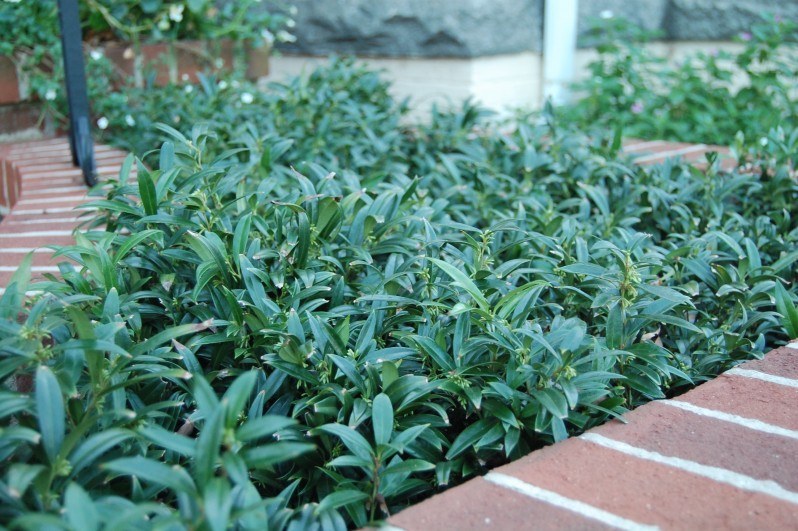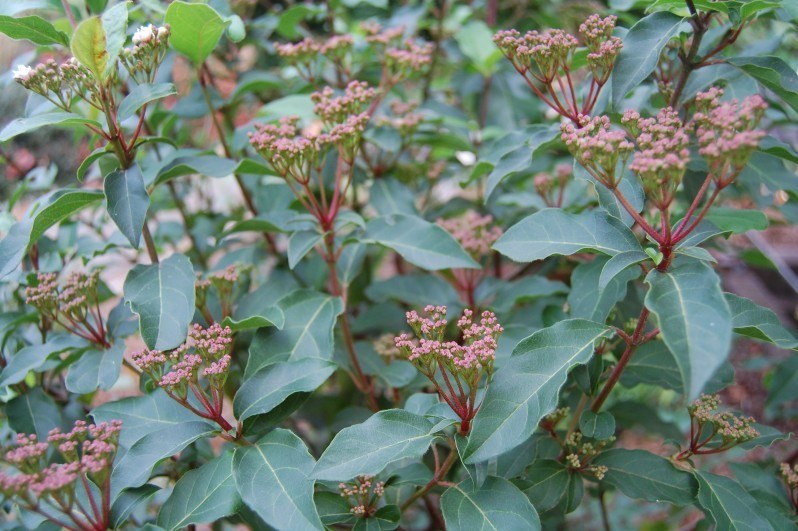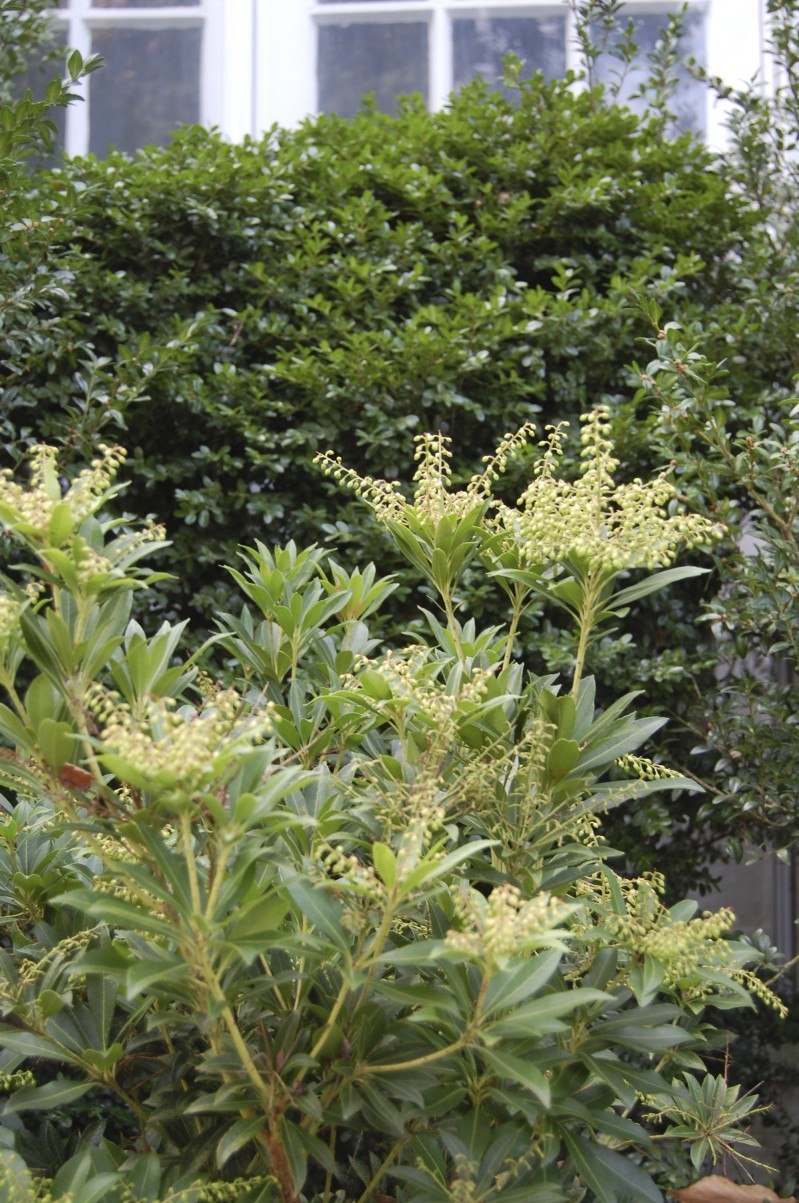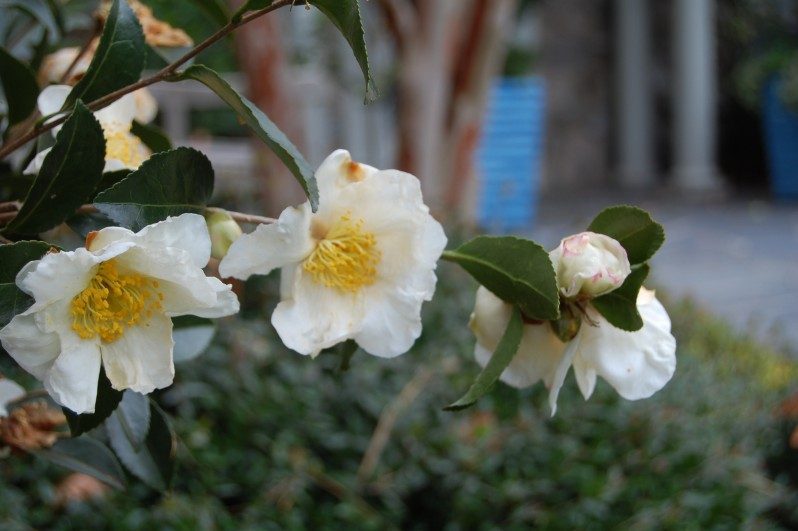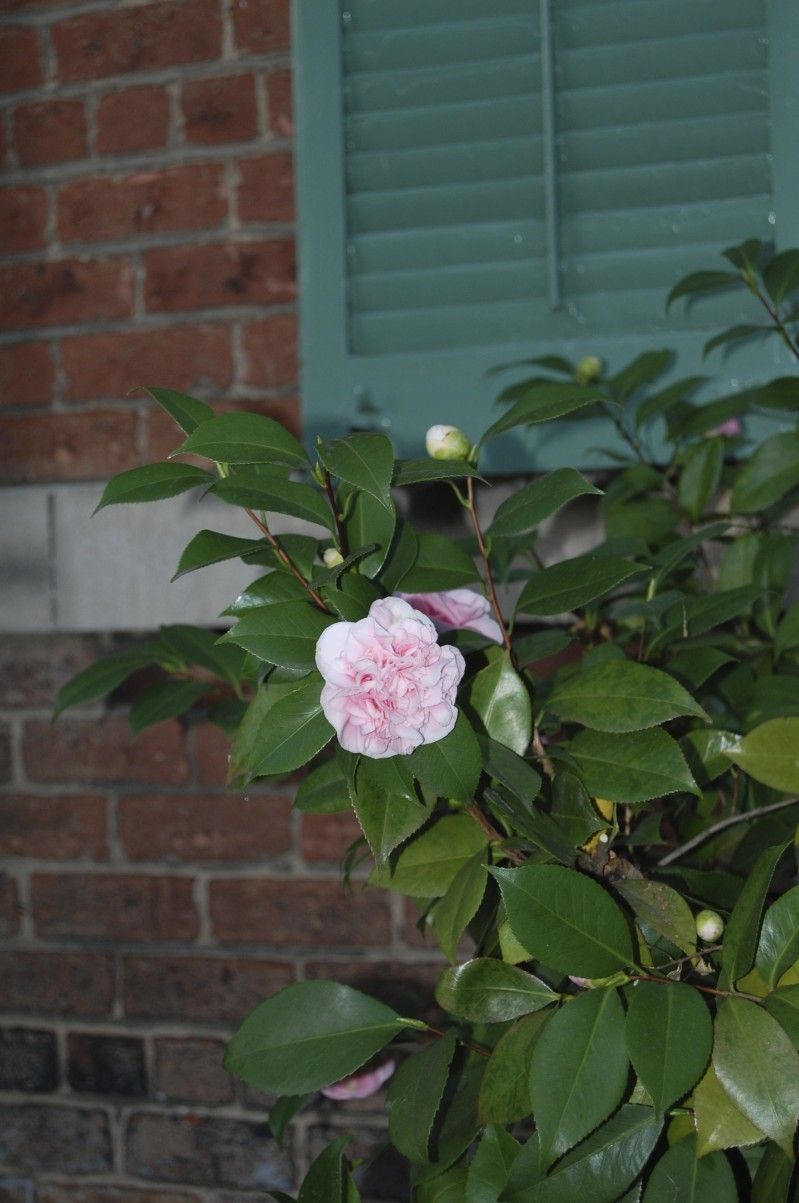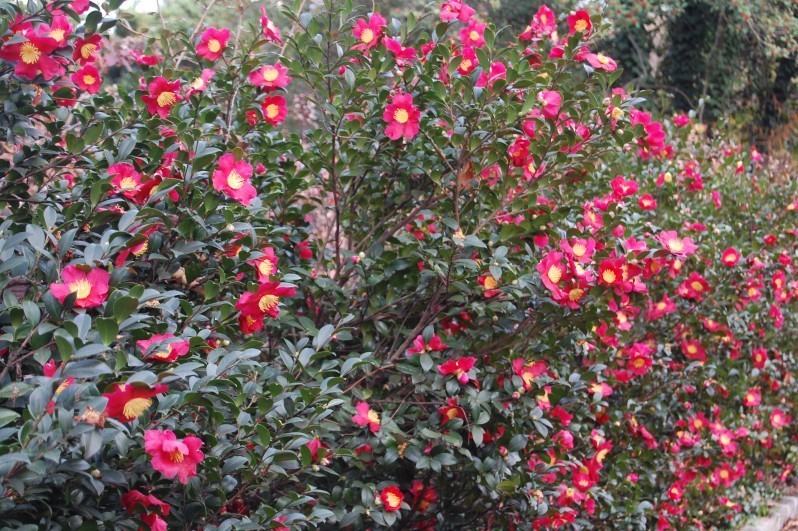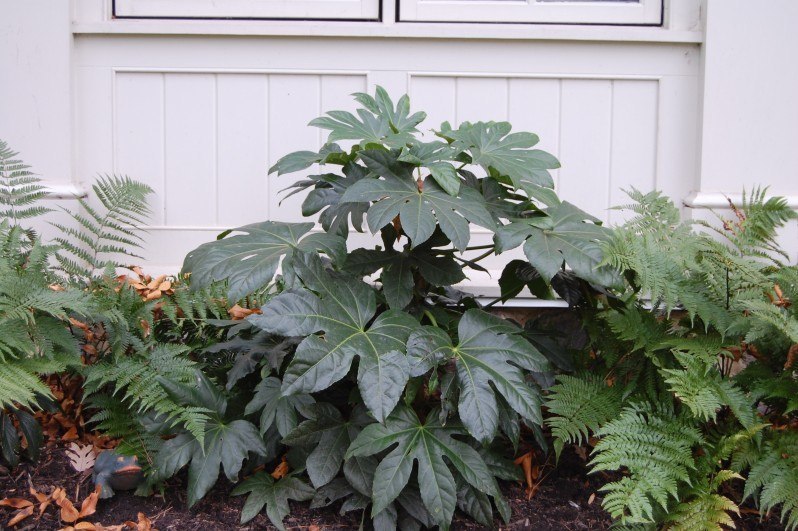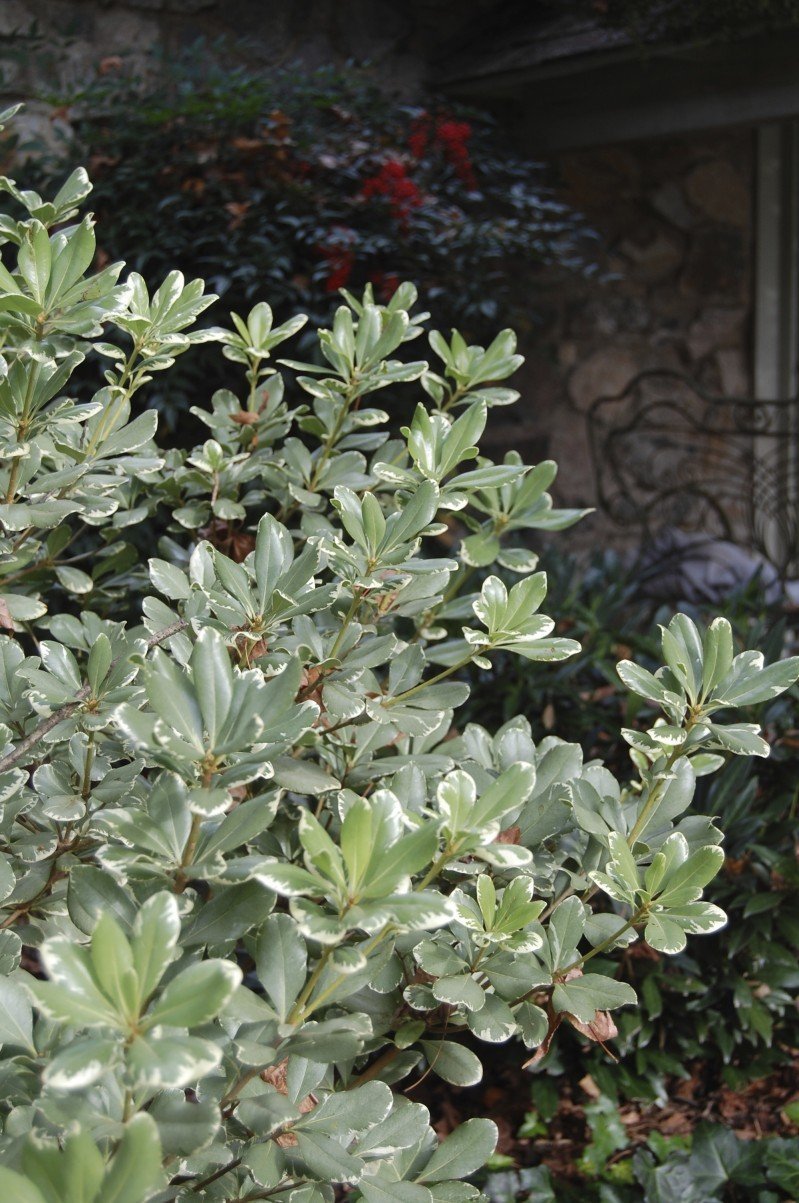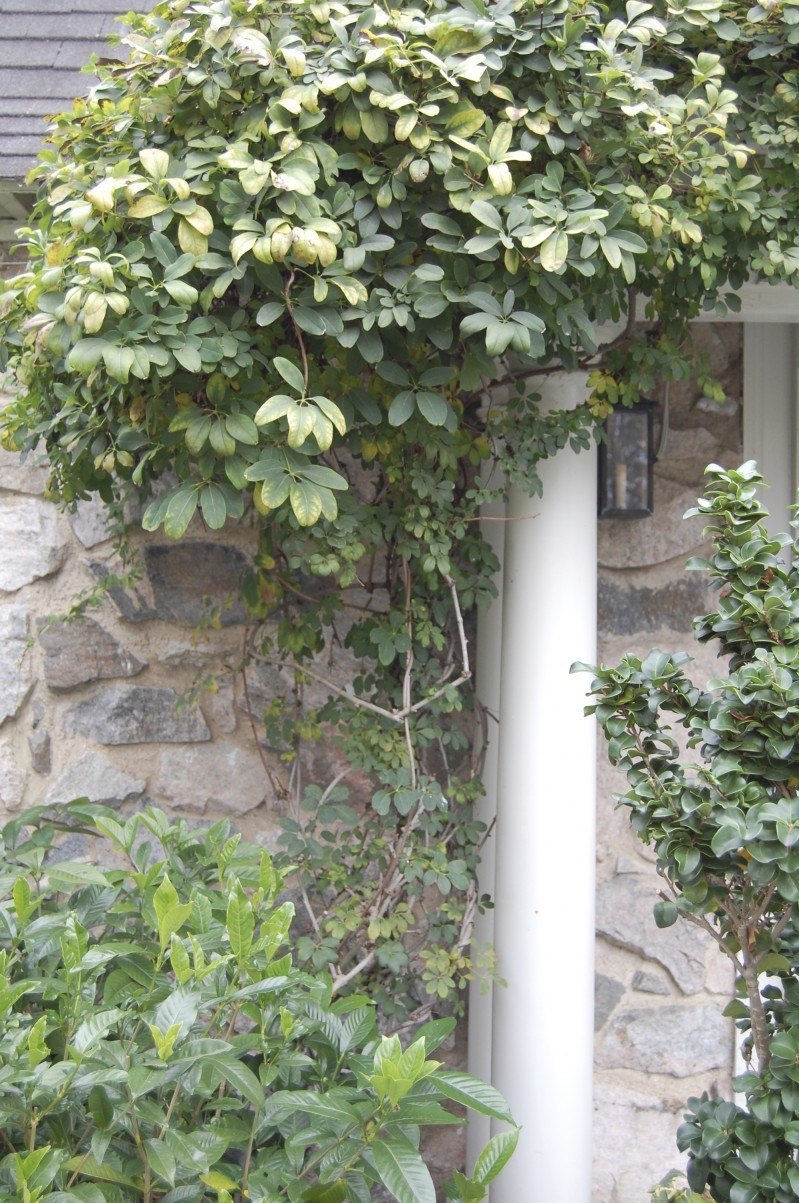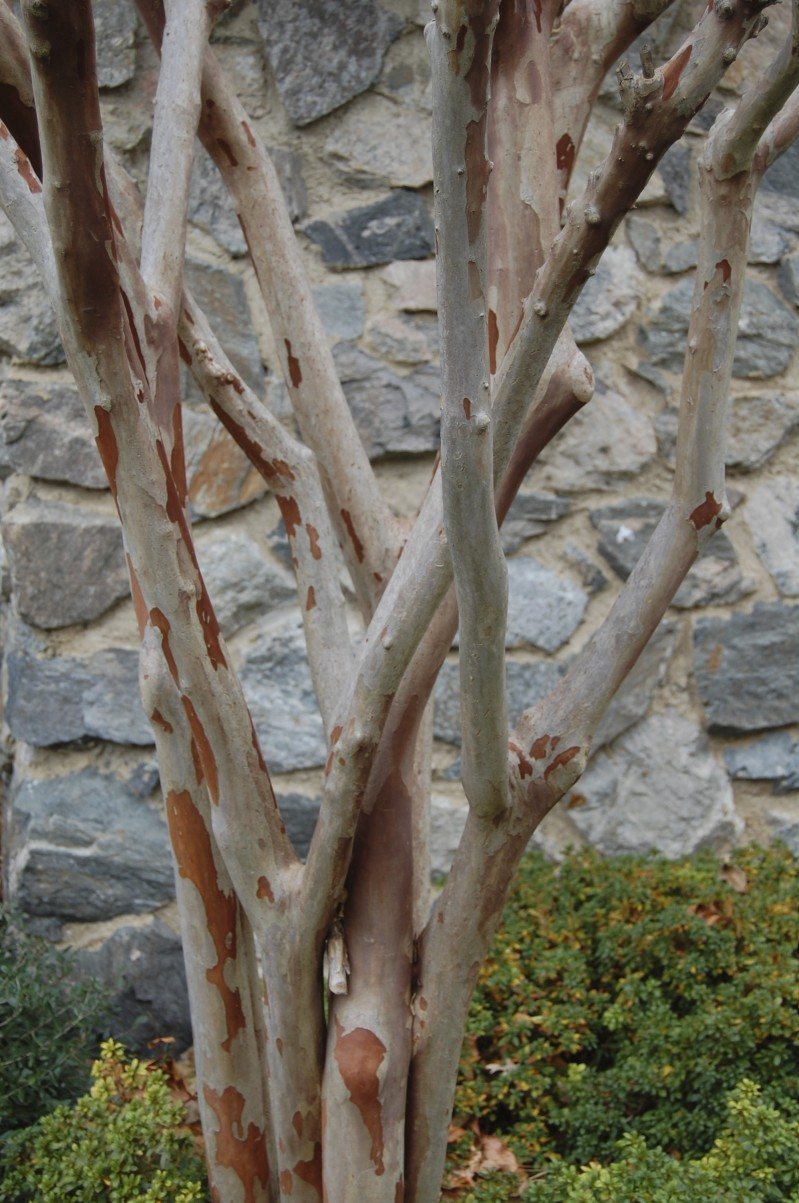THE GARDEN IN DECEMBER
Winter may be knocking on the door, but that doesn’t mean that the garden is hibernating. Plants are busy fruiting, budding, blooming or just looking gorgeous in their Winter furs. Add a few of these plants to your garden beds, then fix a hot toddy and take an evening stroll through your Winter wonderland.
PLANTS WITH DECEMBER FRUITS
Aucuba berries ripen to a bright red in December.
The pale blue-gray berries on the blue version of our native Eastern Redcedar contrast beautifully with the silvery foliage.
Nandina berries grow in thick, luxurious clusters. American Boxwood cuttings make an excellent wreath.
I have to admit that the fruit on the Ivy Shrub is a little “Lost in Spacey”. But I love the creamy margin of the leaf.
The birds seem to have gotten to all of the fruits embedded in the Magnolia cones this year. But the foliage and the cones are still a favorite cutting for wreaths and mantels. The Southern Magnolia (the one pictured is Bracken’s Brown Beauty) can’t be beat for a screen, if you have the room.
NEW GROWTH
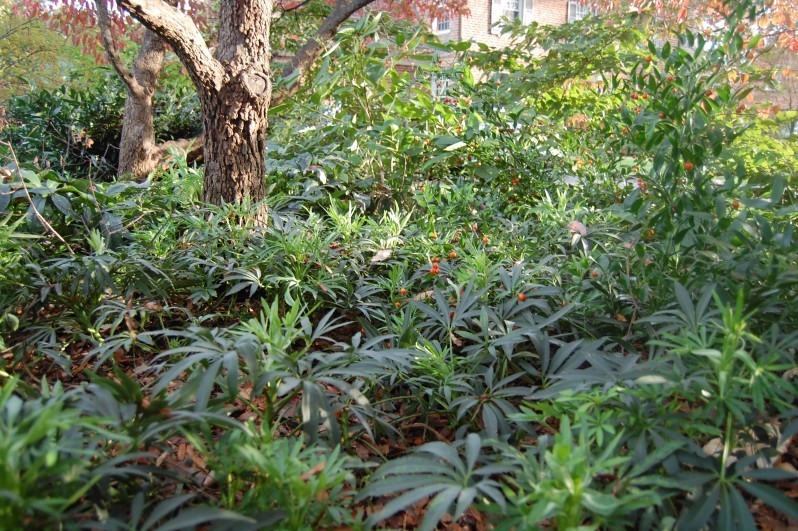
Poet’s Laurel (Danae racemosa) and Stinking Hellebore (Helleborus foetidus) naturalize under Dogwood (Cornus florida)
Several years ago, I planted about 5 Helleborus foetidus and one Poet’s Laurel (given to me by mason extraordinaire David Aldridge). Eight years later, both plants have self-seeded to cover the understory of a Dogwood. The new Helleborus growth is just emerging, and the berries on the Poet’s Laurel are ripening (if only they weren’t that ugly orange).
Lenten Rose will begin flowering in another month or two (depending on the Winter weather). Right now, they are busy pushing out lots of new growth.
Arum is Winter’s Hosta. Arum goes dormant as Hosta leaves mature. Just when Hosta go dormant, Arum leaves begin emerging from the fallen leaves of Fall.
BUDDING AND BLOOMING
The Corsican Hellebore is the first Hellebore to bloom (at least in my garden).
Sadly, I’m very neglectful of my indoor plants and arrangements (right, Frank?). Anything inside has to thrive on benign neglect. I cut some Winter Daphne for a Thanksgiving arrangement this year, then forgot about it. At the time, the flower buds were barely existent –very tight. It caught my eye the other day and daggone if it isn’t beginning to flower. I never thought of Winter Daphne as a forcing option.
Both Sweetbox, the shrub (above), and Sweetbox, the ground cover (below), are in bud right now.
Tinus Viburnum is one of my favorites. Like Pieris (below), it sets its buds in Fall, and the buds persist through Winter, flowering in Spring. I like both shrubs better in bud than in flower.
Wow, what a great season it’s been for Sasanqua Camellias this year! They’ve bloomed their blessed little heads off.
PUSHING THE ENVELOPE
Both Fatsia (above) and Pittosporum (below) are not considered hardy in Zone 7. However, if planted in a protected spot (especially in the Fan), they tend to do just fine. That said, a severely cold Winter may cause die-back, or even complete death.
Akebia, a native vine, is hardy here, but considered semi-evergreen. It rarely loses its leaves in Winter.
Of course, nothing beats the beauty of the exfoliating bark of a Natchez Crapemyrtle (unless that Crapemyrtle has been subjected to Crape Murder).
Many thanks to Mary Bacon and John Crowder, in whose garden many of these pictures were taken.

